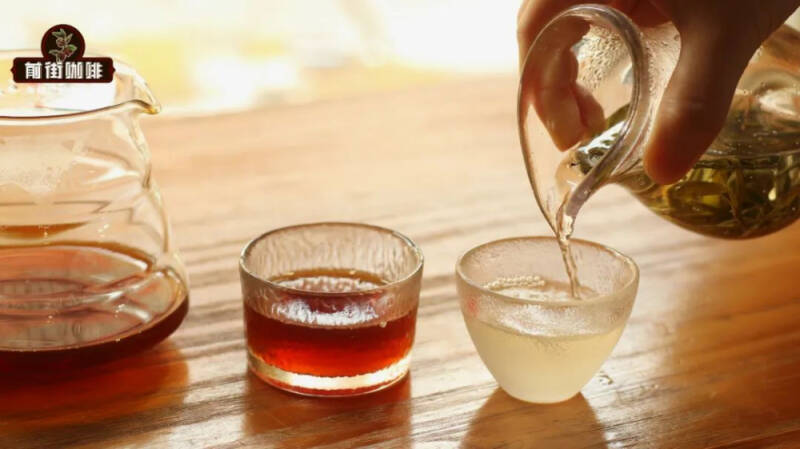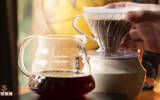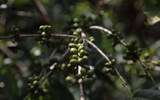What is the tea taste described by the coffee flavor? Does the astringency of black coffee mean the sense of tea?

Many people know that although there are not many words about tea in the theory of taste, people who have known about tea since childhood often use the sense or aroma of tea to describe it when tasting coffee.
However, everyone seems to have their own understanding of the "sense of tea" in the description of coffee flavor. Some people think that it is the aroma of some kind of tea, some people think it should be the astringency of taste, and some people are used to ascribing it to Yu Yun like tea soup. So, what exactly does the barista mean by the sense of tea? What characteristics do they judge on?

What is the tea feeling? Tea drinkers often say: bitter return sweet, astringent Shengjin. If you want to understand the sense of tea, you can't do without talking about the concepts of "bitter tea" and "astringent tea".
The bitterness of the tea is often accompanied by Huigan Shengjin, the entrance is bitter first and then becomes sweet, with the passage of time the sweetness gradually overshadows the bitterness, and finally ends with sweetness, that is, "Huigan". Tea polyphenols are one of the main components of tea color and tea aroma. Tea tannins, which account for the largest proportion of polyphenols, make tea taste strong and make the mouth feel slightly rough. The higher the content of tea tannin, the stronger and more lasting the tea will be.
With high-quality tea with appropriate brewing conditions, the entrance of the extracted tea will show the unique aroma, taste and flavor of the tea variety. For example, fresh and sweet green tea, honey-scented black tea, oolong tea with flower and fruit aroma and baking aroma, aged mellow Pu'er tea and so on.
Why does coffee have a sense of tea? Processing memory and smell are the same area of the brain, and the flavor everyone drinks is closely related to ta's dietary memory. After the coffee is imported, the taste buds will first judge whether it is sour, sweet, bitter and salty, and then the aroma substances will slip into the nasal cavity during swallowing, and our brains will combine the taste with the aroma in the nasal passage. thus showing the perception of the flavor of eating a food in memory, which is the sense of smell behind the nose.
If the delicate aroma sensed by the sense of smell behind the nose, coupled with the taste experience before and after swallowing (sweet, slightly astringent, Shengjin), it is reminiscent of the feeling of tasting a certain variety of tea in the past, indicating that we have tasted tea in this cup of coffee. In other words, whether you can get the sense of tea from the coffee depends on whether the drinker is familiar with the aroma and taste of the tea.
For example, when the current street drinks Panamanian water to wash Pokuit in summer, it exudes the fragrance of white flowers, fresh and sweet taste, bright and light sour and sweet taste, which immediately reminds people of the feeling of drinking Tieguanyin tea. Therefore, from the point of view of Qianjie, the sense of tea does not refer to a sensory feedback alone, but a comprehensive description of the experience brought about by coffee.
Tea feeling ≠ astringent feeling, the original meaning is not slippery, generally describe the rough touch that food brings to the mouth, not taste. The astringency in coffee stems from the combination of polyphenols with saliva proteins, reducing oral lubrication and increasing friction, thus giving the epidermis a rustling sense of convergence.
Coffee lovers generally believe that the bitter and exciting astringency is an unpleasant experience, even masking the unique and subtle flavor of coffee, but there is also a "good" astringency that enriches the coffee level. Like the slightly astringent taste of citrus peel, with the unique weak bitterness of coffee and sweet and sour fruit, it not only tastes like grapefruit tea, but also has a lingering sweetness.
In the hearts of a thousand people, there are a thousand feelings of tea that want to find a certain "taste of tea" in our memory, and we have to combine the aroma we feel from the coffee, the aftertaste, and the degree of sweetness in the mouth.
In front of the street, when you taste Yega Sheffield Dingding Coffee, you can feel the fresh and elegant aroma of the coffee, thorough sweetness, and a slightly astringent finish, like unfermented green tea.
The Qianjie Yunnan Iron pickup Coffee, which is sun-treated, absorbs more fermented aroma because the pulp is fermented together in the sun. Qianjie tastes the sweet and mellow aroma from the cup, which is sweet and solid, with a fully fermented black tea taste.
In addition to conventional tea types, some coffee with complex aromas also remind us of the taste in memory. When tasting Essex plus Amedilaro coffee beans, the juice of white grapes is sour and sweet, and the fruit of grapefruit peel is astringent and sweet, mixed with elegant scented tea, reminding the front street of a pot of freshly brewed rose tea.
Precisely because in the world of tea, there are different kinds of tea, such as white tea, green tea, green tea, black tea, Pu'er tea, and so on, even if it is the same "tea feeling", the definition in everyone's mind may be very different. Finally, I also wish you can find your favorite sense of tea in the coffee you brew.
-END-
Front Street Cafe
No. 10 Baoqian street, Yandun road, Dongshankou, Yuexiu district, Guangzhou, Guangdong province
Important Notice :
前街咖啡 FrontStreet Coffee has moved to new addredd:
FrontStreet Coffee Address: 315,Donghua East Road,GuangZhou
Tel:020 38364473
- Prev

What about the blockage of hand-brewed coffee extraction? What about stagnant water?
"intercepting" is a helpless move caused by the blocking of fine powder in the process of cooking by hand. once it is not intercepted in time, the bitter taste will give you a horrible "tip of the tongue" experience. But if we say that before the blockage event is about to occur, we have predicted that there is a high probability of blockage in this cooking.
- Next

Introduction of Ethiopian Coffee Variety introduction of Ethiopian native species Heirloom and 74Coffee 75
Usually when buying Ethiopian coffee beans, most of the beans on the package appear "Heirloom". Heirloom in Chinese translation means native seed or family heirloom, generally refers to the mixed harvest of coffee varieties. But recently, there are also some digitally coded beans, such as 7.
Related
- What effect does Italian American coffee with filter paper have? Will coffee taste better if it is put on filter paper at the bottom of the powder bowl?
- What is the color difference in coffee beans? What are the characteristics of honey processed coffee beans? Why are the anaerobically treated coffee beans uneven in color?
- How does novice Xiaobai quickly get started and make coffee? Newbies learn to make coffee by hand and share the specific steps and process process!
- Costa tea has a shelf life of 100 years?! Expert: Unable to verify
- It's a huge uproar! American milk addition was rejected by Manner employees?!
- Mocha pot coffee bean recommendations| How fine and how much powder should be used for grinding? What parameter ratios do I need to use to make milk with Mocha pot coffee?
- What are the characteristics of the world's top ten coffee beans treated with Costa Rica honey? How to make black honey kadura from Tarazhu Pilon Processing Plant taste good?
- How to make deep-roasted coffee? What grinding water temperature does authentic Jamaica Blue Mountain No. 1 coffee use to brew it well?
- Selected high-grade rose summer coffee flavor tasting guide Why Panama rose summer has the aroma of flowers and fruits
- What equipment does a novice Xiaobai need to buy to learn to make coffee? Filter cup electronic scale bean grinder manual flushing pot purchase guide

